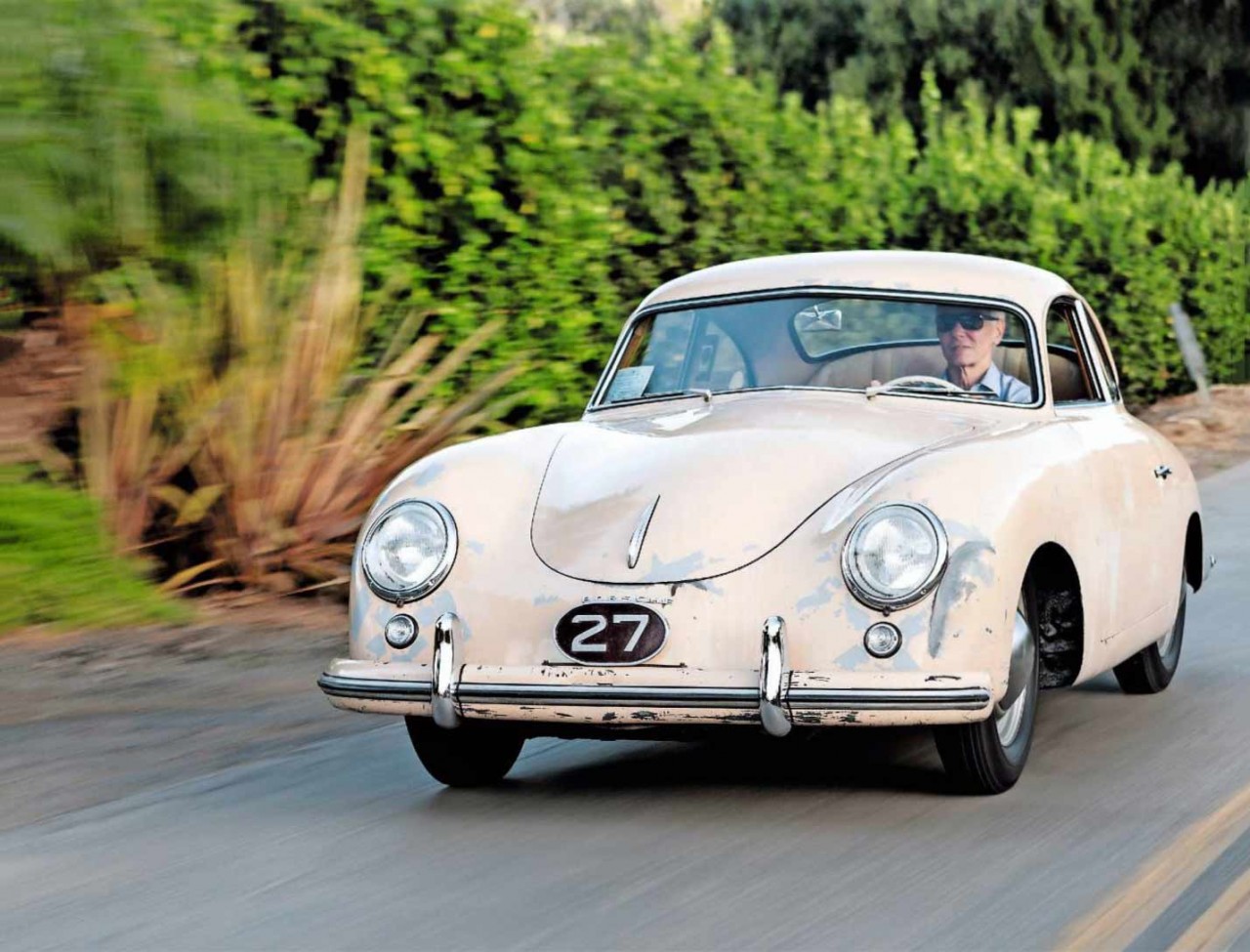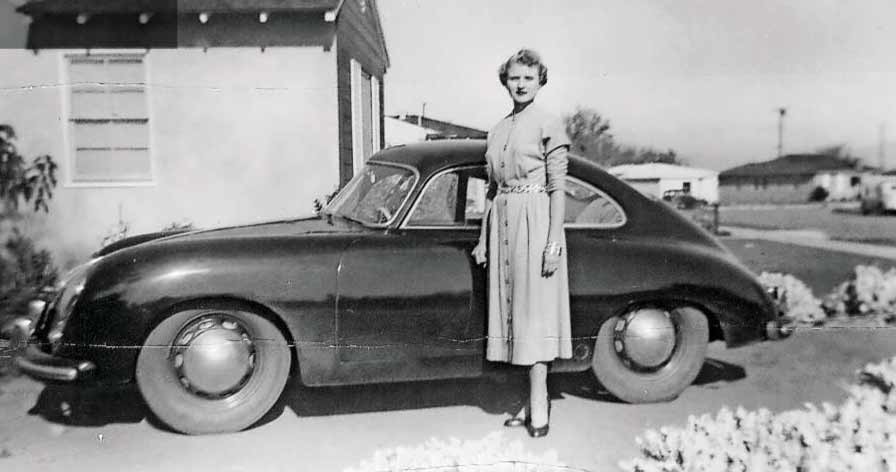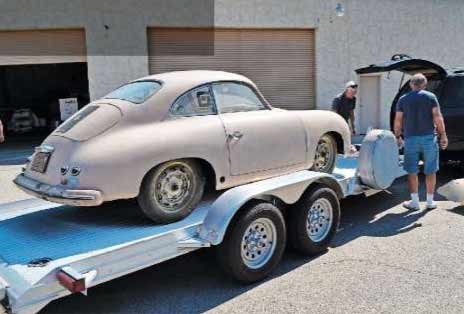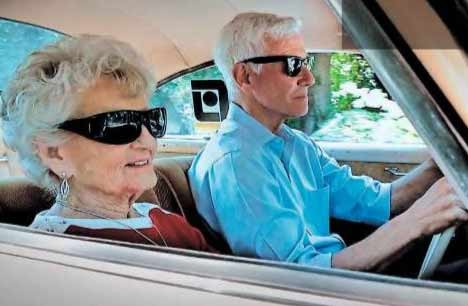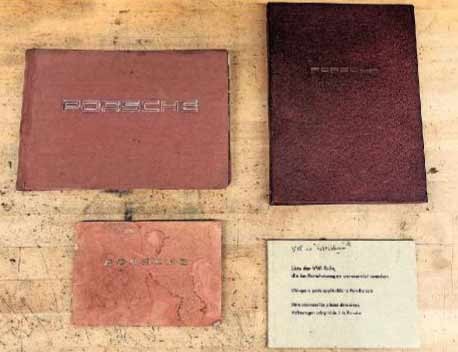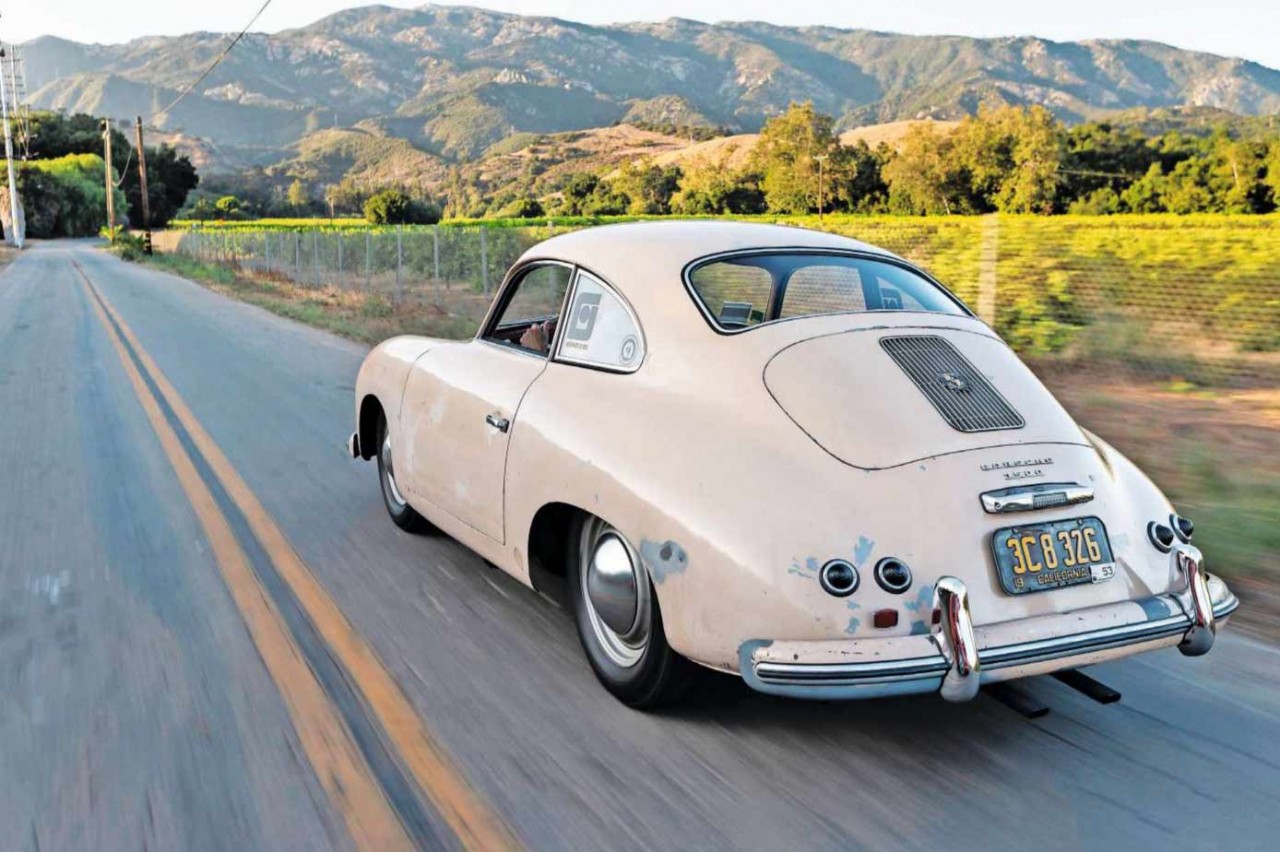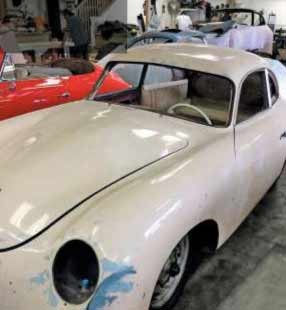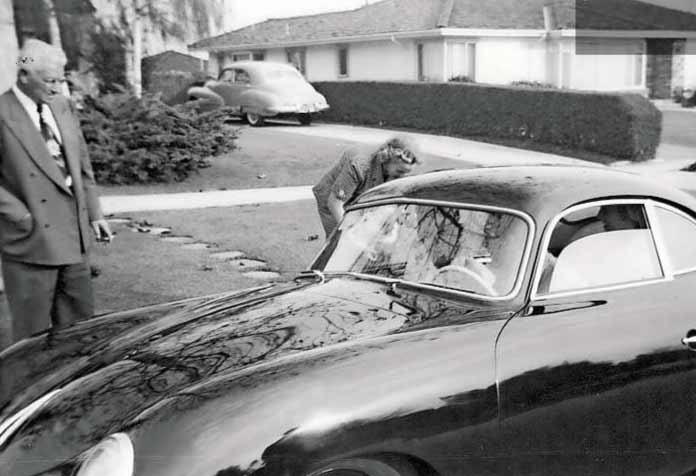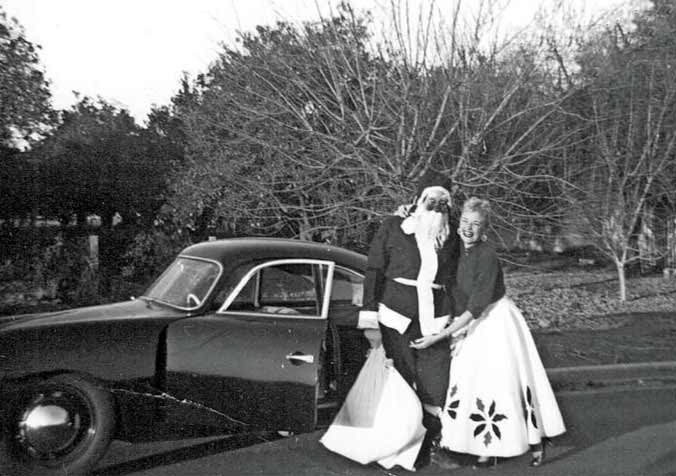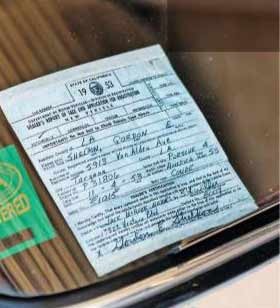California soul: the Porsche 356 ‘family car’ that started a club
Gordon Sheldon buys it new in 1953 for $3395 (£1218)
‘When I first saw the car I had a fit!’ says Lois Sheldon. ‘It was 1953 and my late husband Gordon and I were about to adopt a baby. I heard a car pull into in the driveway, looked out and there was Gordon with this tiny little sports car. I couldn’t believe it.
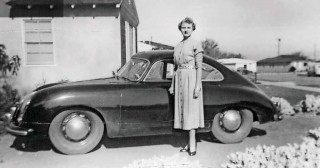
‘He bought it from Jack McAfee, who was a dealer in Sherman Oaks, Los Angeles, California. I said, “You bought that car? When we are going to have a baby? Look how little it is, where are we going to put a baby?” ‘He said, “Don’t worry, I’ll fix it.” There was this little space behind the front seats so my husband, being clever and resourceful as he was, built a platform that was slightly below the seats, then placed a little mattress on top. Our baby Michael slept back there and went everywhere with us.
‘Gordon would drive the car to work and when Michael was about two years old, he could hear the car as it came off the freeway and would run to the door saying, “Daddy’s coming, Daddy’s coming.” This car was part of his life from the time we first adopted him. ‘I didn’t like the colour to begin with, and I thought the whole thing was crazy, because it was so little. As it progressed I learned to love that car.’
Gordon was a founding member of the Porsche Club of America. ‘He decided that everyone in the Porsche club needed a number, so ours was 27.
Art Russell takes up the story, ‘I was a student at Venice High School in the Fifties, and Gordon Sheldon was my machine shop teacher. One day in 1953 he had the class come to the carpark and there was a maroon Porsche sitting right outside the shop door.
‘I thought the car was on fire, but in fact it was just a trail of dust, sand and dirt in our wake’
‘We were all high school kids and into American cars – Fords, Chevys, stuff like that. I don’t think any of us had ever heard of a Porsche. He explained what it was, and we all sniggered. The car was certainly unique! ‘When I got older, I got bitten by the sports car bug, and after I graduated from Arts Centre College of Design in 1959, I bought a used 356 just like the one I was sniggering at a few years earlier.

‘We were very fortunate we had Mr Sheldon as an instructor. If you came up with a project he would show you how to make it; there wasn’t anything he didn’t know how to do in that machine shop. I got much more from machine shop than I ever did from English class. We had fun and learned a lot working on our own cars with his help.
‘I remember him doing small jobs in the shop on the 356, changing the carburretors to get a little more power out of it and that sort of thing. We made plaques like the number 27 one in class – we made the moulds and then sand-casted them.’
Lois continues, ‘In the early Seventies we decided to repaint the car because the original paint was failing.
I told Gordon I didn’t want it burgundy again, so he asked me what I liked and I said, “Well I like that new colour that Ford just brought out, a sort of pinky beige.” Gordon bought the paint and had it done. So actually the car had two lives, one as burgundy, and one as beige. Gordon was a bit colourblind so he really didn’t know much about the colours.
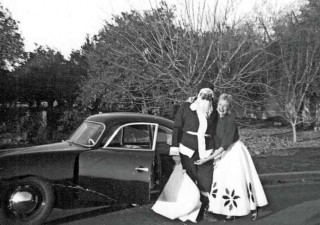
David C Green, a friend of Gordon’s niece Cathy explains, ‘The car had been taken off the road in the Seventies because of engine noises, and had the engine not made bad noises, I suspect they probably would have kept driving it and eventually sold the car on. The early two-piece crankcase engines have a flat on the valve lifters and the noise was a common complaint. ‘Once the car was parked, the Sheldons started to store things on it – magazines, books, blankets etc – and the 356 became more and more buried. It was in the garage during the Northridge earthquake in 1994, which caused paint to be thrown from a nearby shelf and splash down the left-hand side of the car.’
Lois recalls, ‘The last time I saw the car was when Michael trucked it away soon afterwards. The tears just started rolling down my face and I thought, “That is the end of a life of that car.”
‘I never thought I would ever see it again.’
Passed down through the family in Nineties
In the mid-Nineties, first Michael and then Lois’ nephew Tom took custodianship of the 356. Tom moved it to a contractor’s storage building in Indio, California; he did some work on it occasionally, and had the engine rebuilt. David C Green continues, ‘I had known about this special car since 1996. Cathy would tell me about her uncle Gordie’s Porsche, with stories of him taking it to Mexico, doing rallies with it, and how important it was to their family.

‘Every once in a while I asked Cathy, “Does the family want to sell the car?” The answer was always no, and that went on for 13 years. In spring 2015 Tom was retiring, and we had another conversation. I spent a month trying to work out what the car was worth so I could make a fair offer. I’m in real estate development, so I used a real estate residual appraisal technique, starting with the restored value, less the restoration costs, and making an allowance for the history.
‘I made an offer; the family declined but decided that they wanted to restore the car and keep it in the family. I said, “Great! Keep it, get it going and use it,” but politely cautioned on the costs and time involved in doing so. Following some more discussion, the family agreed to sell me the car.
‘I went down to Indio with an SUV and a trailer to pick it up. The engine was on a pallet, and there were seven large boxes of parts, boxes and documentation. As we were leaving Indio I checked my mirrors and panicked – I thought the car was on fire, but in fact it was just a trail of dust, sand and dirt off the back of the car that we left in our wake for miles.’
On arrival back at his workshop in Santa Barbara, David soon got to work. ‘The first thing I did was to sort through all the bits and boxes. The further into it I got I realised that, with very few exceptions – the paint being the most obvious – the car was entirely original. That made it impossible for me to contemplate restoring it as I’d originally planned, and sent the project down the preservation path. At the time my friends thought I was crazy; they said, “We know you – you have had some nice restored cars and couldn’t live with a car in this state.” Most of them have come around to the idea now.’
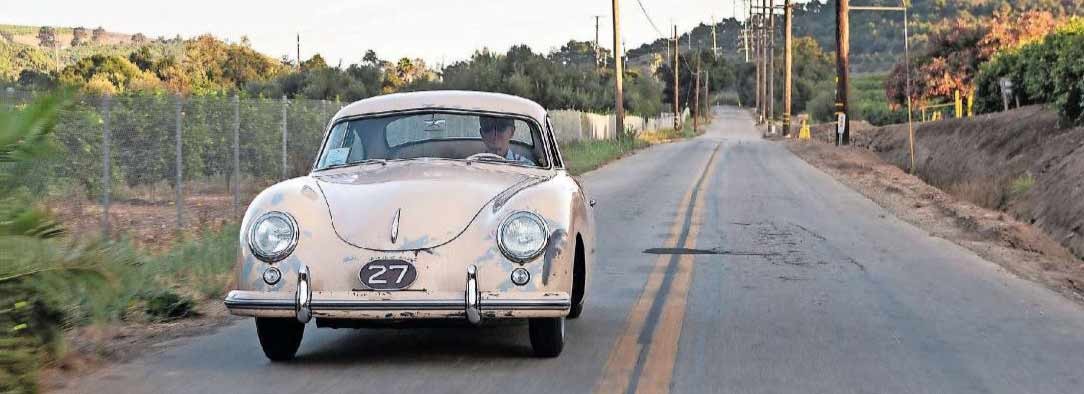
Gordon had saved everything and there were some real treasures in those boxes, including a perfect copy of the original Porsche Panorama magazine volume 1, number 1! The original keys, owner’s manual, and purchase receipts were there too. Gordon had paid $3395 – you could buy a house for that then. No wonder Lois wasn’t happy!’
Gordon’s choice of model, a 356 ‘America Coupe’, perhaps justified the purchase to himself, if not his wife. ‘The story behind the model is that US importer Max Hoffman couldn’t sell many cars in 1952, so he went to Porsche and asked for a de-specced car to get the price down,’ says David. ‘It’s fascinating to see where they saved money – it has one sun visor, no radio, a 55bhp engine, corduroy trim and no back seat.

The passenger’s seat doesn’t recline, it only tips, and I found out recently that it also has no interior air vents. ‘In the boxes I found a VW to Porsche parts crossover reference, and the original service manual and parts book with all the drawings as well. Also part of the stash was the original wood gas tank dipstick – it doesn’t have a gas gauge – and the toolkit, which is complete with the exception of one screwdriver. The rarest item in there is the Hazlet 11/12mm wrench. These days they go for about $800! Interestingly the car also came with a magnetised work light, which plugged into an power socket under the steering wheel in the event of encountering problems at night.’
With all the loose parts sorted, David got on with pulling the car apart. ‘Apart from being very dirty, the car had suffered from the heat in the storage building in Indio. Daytime temperatures were commonly 120°F [49°C] in there, which had dried out all the rubbers, and the headliner had completely disintegrated. ‘I tried to keep as much original stuff as I could, for example I kept the wheel cylinders by having them sleeved, rather than buying new ones from China for $50. I still have the original dampers and they are fine, but I don’t drive with them fitted.
‘I saved as many of the rubbers as possible. There is a trick – you take old rubber, put it in a garbage bag with brake fluid, and that refreshes it. The rubber floor mats are original; there was a small hole under the accelerator but I was able to rescue a piece from the damaged tunnel shifter mat and splice it in to save the front mat. I also managed to save the window felt and the front bumper decoration rubber.
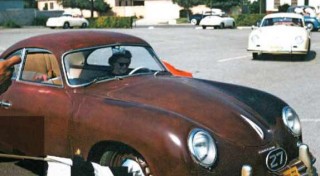
The engine was shrink-wrapped on the pallet, though rats had eaten anything soft they could get to. ‘I have enough experience to know that if there is an open valve, mice can drop a nut or a rock in there. Over a few months we turned it over 10-20° at a time, and I got my borescope in there. It was perfect, other than a little bit of rust on the bores. I was lucky that the motor was rebuilt by someone who knew what they were doing. ‘Once I had established there was nothing bad inside, the engine went to local Porsche expert Arthur Connor’s workshop here in Santa Barbara. We put it on his dyno and spun it up until we got oil pressure, then started it. It made 53 or 54 horsepower of its original 55, which reassured me that it was ok. Gordon had rebuilt the gearbox in the late Sixties and it was still perfect.
‘Eighteen months later, after 1500 very enjoyable hours, the 356 once again moved under its own power for the first time since the Seventies.
‘The car is original with the exception of six things – the headliner, the seat covers, one hub cap, the transmission tunnel mat, the sun visor – it’s a German one but isn’t original – and the front turn signal lenses, which are just too delicate to use.’
‘I reunited the car with Lois. To see her excitement was the culmination of a dream I’ve had since I got the car’
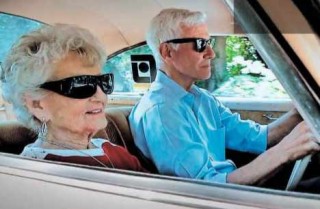
The 356 took ‘matching-numbers’ to a next level. ‘Porsche numbered everything with the last two digits of the serial number. You’ll find the number 15 underneath the back seat, behind the doorcard, under the glovebox. Very few cars have their numbers intact. ‘This is the most documented car that I know of that isn’t a racing car, and because of that has now become a reference car for other restorations. Restorations are like Chinese whispers; restored cars are off other restored cars, and mistakes multiply over time.
‘With some encouragement from a friend who judges at Pebble Beach, I’ve had the car FIVA inspected and certified as A2. A car that has been sealed in a bag since it was new would get an A1; most cars I know of get A3 “Restored”. A2 is “Authentic”. I did it because it gives me access to events and, perhaps more importantly, it means if someone restored it they would lose the certification, which I hope will give future owners pause to tamper with it.
‘In 2017 I was able to reunite the car with Lois Sheldon, who was 93 at the time. To see the excitement on her face was really the culmination of a dream I have had since I got the car. It was wonderful to be able to spend an afternoon with Lois and her car. ‘On event applications I submit with an opening apology, “I know this isn’t what you typically want…” I end with a short sentence, “Its condition is its history.” If it was restored, it would be like any other car, I would be explaining the history. But here you can see it.
‘This year at Monterey Car Week I showed it at Concours on the Avenue. The 356s were on a side street and I was right at the end, as far out of sight as could be. I watched people turn down the street and walk straight past the perfect cars, but when they got to number 27 I saw the smile appear and they came to talk to me.
‘Some cars are chick magnets; this car is a story magnet – everyone wants to tell you their tales of the cars in their family. I plan to keep sharing it with the world.
Number 27 has been so lovingly preserved that it serves as a template for other 356 restorations; original documentation includes VW parts crossover reference.
1953: Lois isn’t convinced about the 356’s family-carrying credentials
1953: Gordon (as Santa) with his new sled
1953: the couple show the car to Gordon’s parents The 356 proudly wears the number 27 Porsche Club of America plaque its first owner Gordon Sheldon made in his machine shop in the Fifties
1959: Lois on an Autocross; note paint is already fading
2016: the car arrives at David’s place, leaving a dust-trail and a lot of history behind it
2016: the 356’s drivetrain needed minimal attention
2016: the 356 in David’s Santa Barbara workshop Today the 356 wears the beige Ford hue that Lois chose in the early Seventies, albeit with a few character lines
2017: David takes Lois for a drive in ‘her’ Number 27

